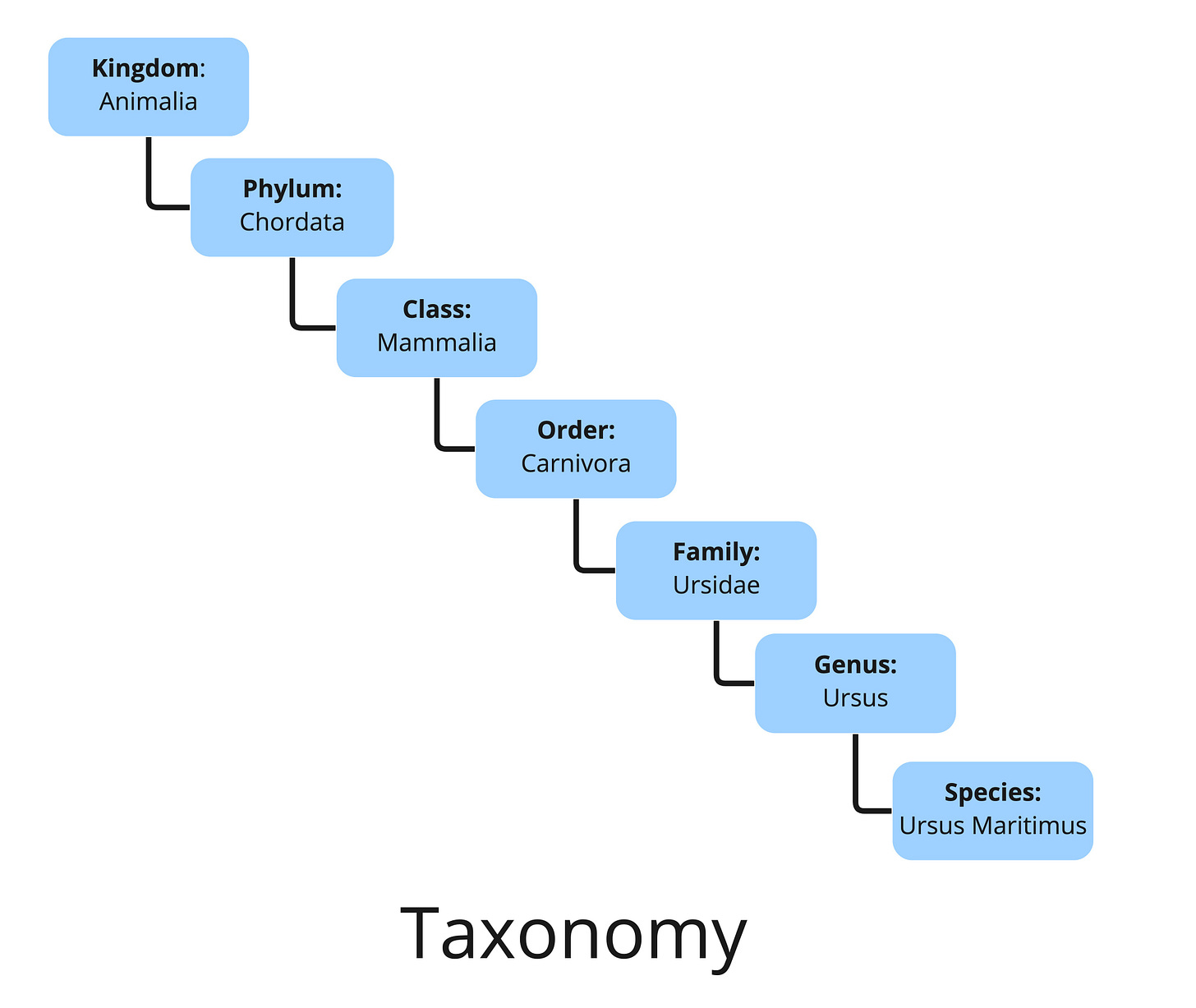Taxonomy
Written by Siya Vashi
Carl Linnaeus is known as the father of taxonomy, which is the classification of organisms into specific groups based on certain traits. For example, humans are classified as Homo sapiens because we belong to the genus Homo and the species Homo sapien.
There are seven taxonomic levels, each one getting smaller and more specific from left to right: kingdom, phylum, class, order, family, genus, and species. An acronym to remember these is: King Henry Came Over For Great Spaghetti.
Humans belong to kingdom Animalia, phylum Chordata, class Mammalia, order Primates, family Hominidae, genus Homo, and species Homo sapien. Classifying organisms into these groups is important because it helps us determine which species are similar, and which aren’t. For example, in a lot of biology or anatomy classes, there are pig or cat dissections. They don’t seem very similar to us, but humans, pigs, and cats share the same kingdom, phylum, and class. Chordates all have a notochord (intervertebral discs between our spine), a dorsal hollow nerve cord (our brain and spine), a pharyngeal slit (our ear bones and hyoid bone), and a post-anal tail (tailbone in us, tails in pigs and cats). Mammals all have fur and mammary glands. Even though we look so different from cats and pigs, we all still have these characteristics in common.
References
https://en.wikipedia.org/wiki/Taxonomy_(biology)#Modern_system_of_classification
Written by Siya Vashi from MEDILOQUY


